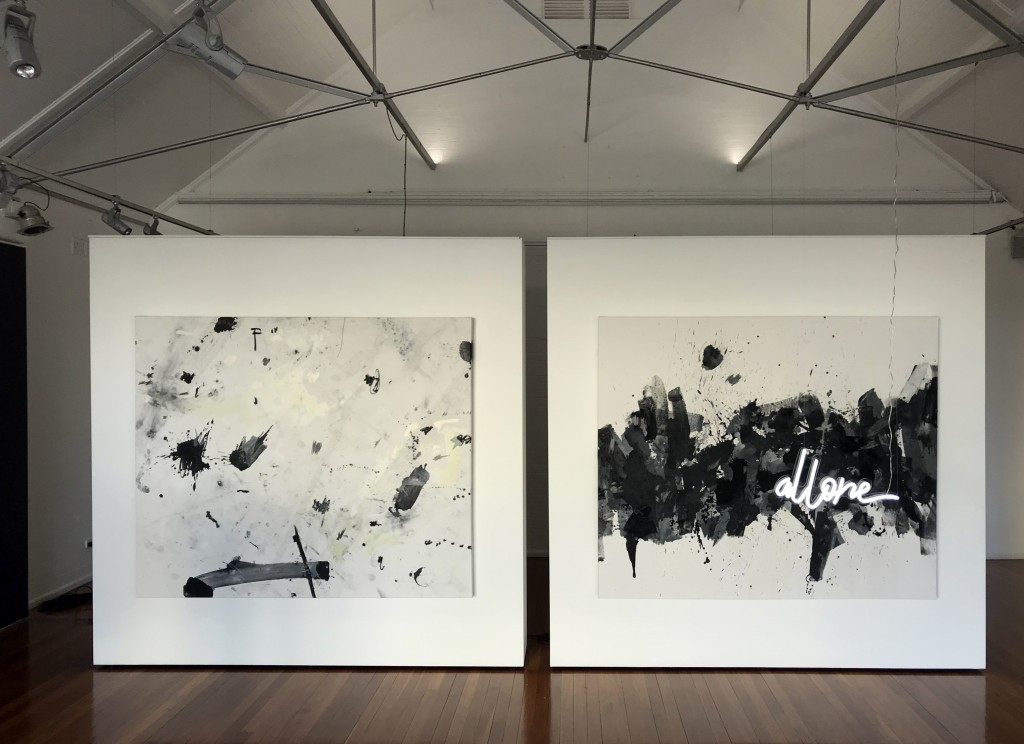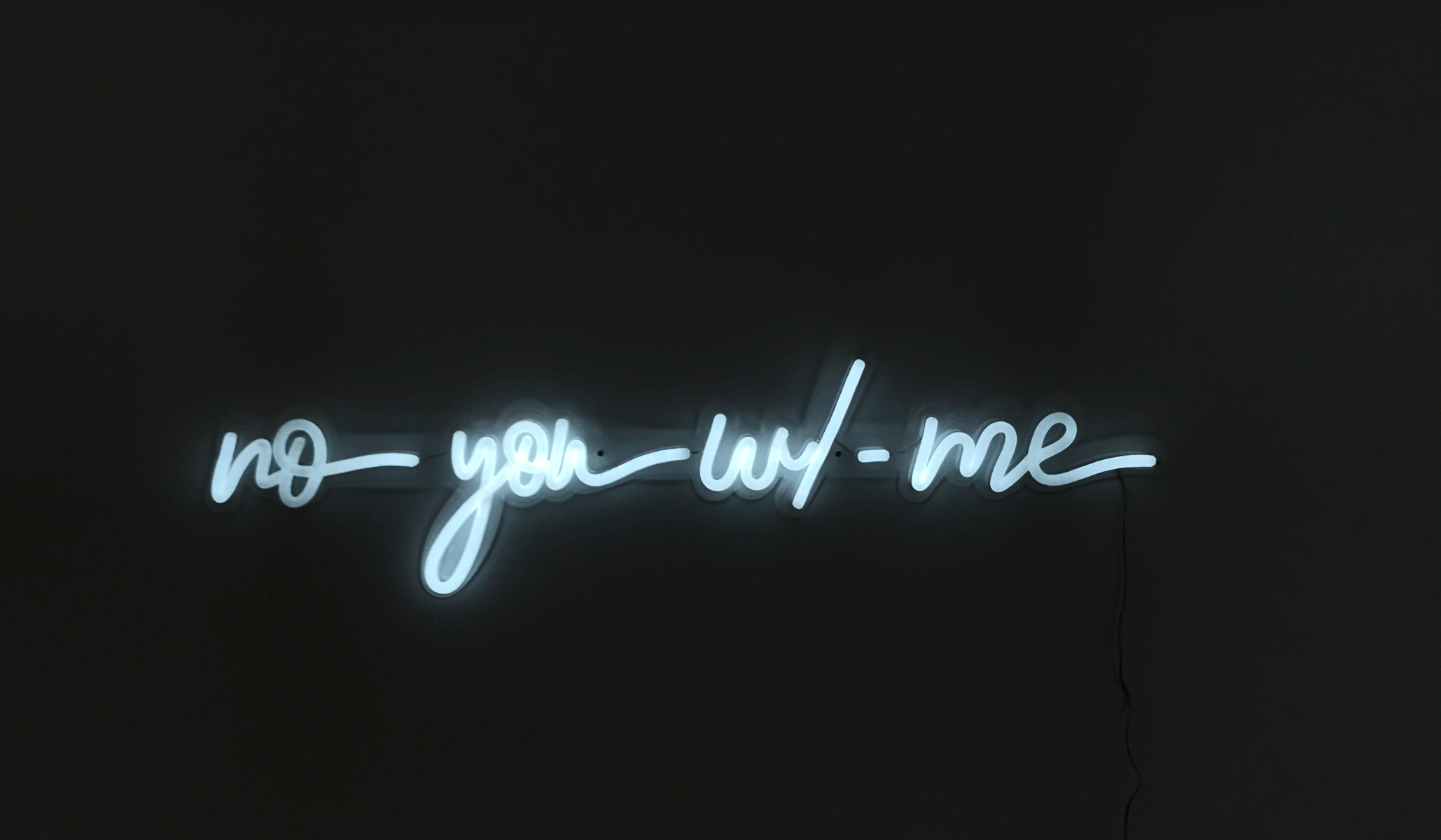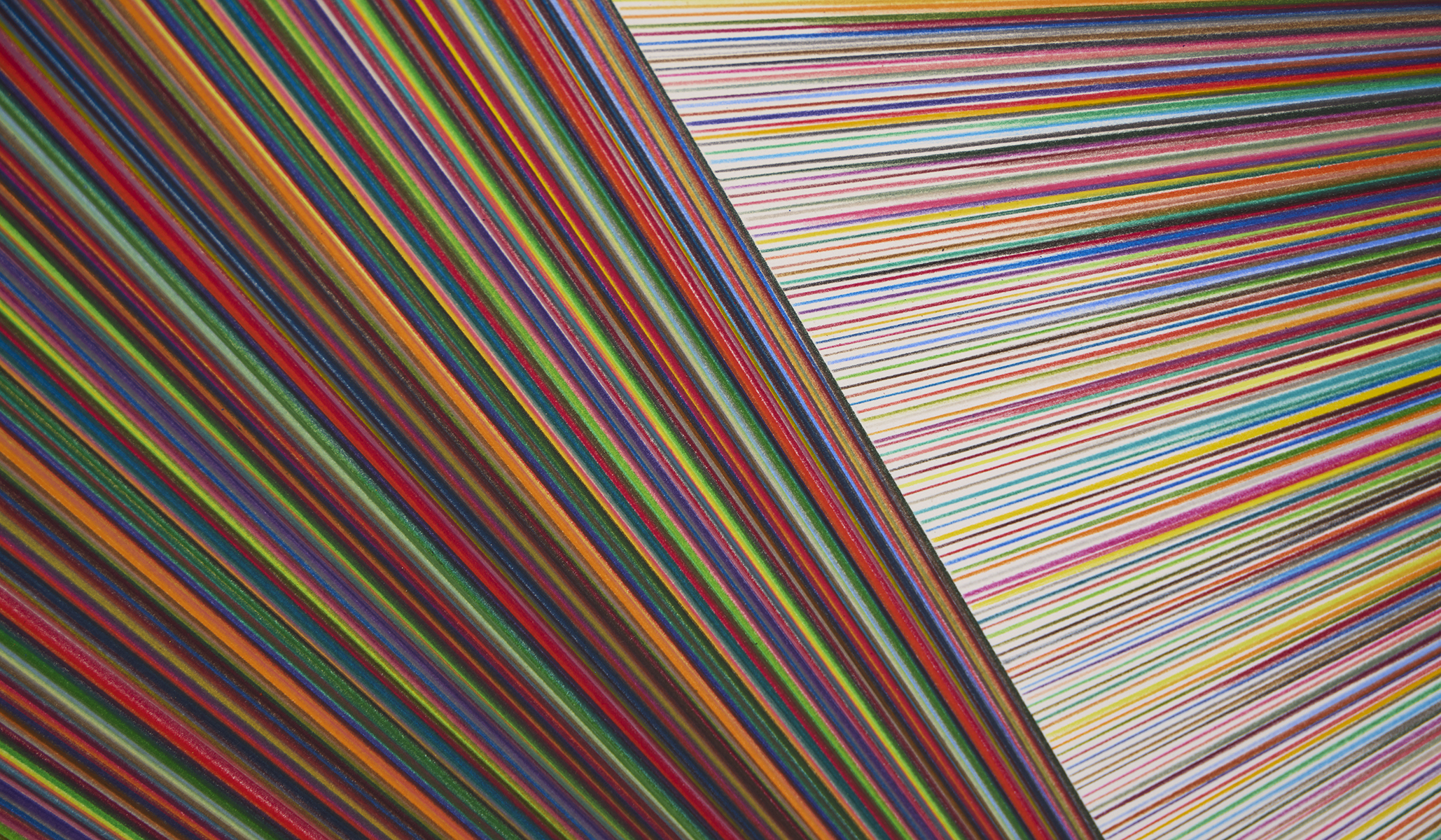“To belong
I first must accept who I am.
To accept myself
I first must know who I am.
To know who I am
I first must sit.
It is always about sitting
with myself.
I am always encountering myself.
When I see
when I do
I am always myself.
All of it, is only me.
Once I understand this
I can understand
that I belong to everything.”
Douglas Diaz
.
.
This October, Artereal Gallery presents I, belong a collaborative exhibition between Sydney-based artist and psychotherapist Noula Diamantopoulos and Bangkok-based American artist Douglas Diaz. Having first met in 2018 when they both exhibited as part of a group exhibition at Artereal, Diaz and Diamantopoulos have since formed a rare friendship and entered into an expansive dialogue over email, skype and Instagram which has allowed them to explore the overlap between their artistic practices. Grounded in the idea of belonging, their exhibition presents a selection of paintings by Diaz alongside light-based text works by Diamantopoulos, all of which have sprung from a series of mindful and transformative conversations between the two artists on life and art.
“All of my work can be summed up in a single quest: to understand who I am. Sometimes this quest takes me on a path from the raw and difficult to the meditative and introspective. For this exhibition: I, belong, the initial inquiry started while listening to Mos Def’s song Umi Says. Inspired by his overture of wisdom acquired through the innate challenges of being a black man, (predominately how to reconcile his perception and how others view him) I too began looking at myself from multiple perspectives. On the one hand, I catalogued my fears, my dreams, and my inner struggles, as a way to understand myself as an individual. On the other hand, I looked at the familial and social constructs which frame, limit and confine who I am.
It was during this time that I began to collaborate with Noula Diamantopoulos. The conversation quickly shifted to the idea of belonging as her work explored a similar trajectory: the personal versus connection to others.
Hovering between these two worlds, it was evident that the inquiry pertained to a larger understanding of belonging: belonging to myself (the authentic self), belonging to others (the relational self), belonging to everything (inclusivity), and belonging to nothing (exclusivity).

The new conceptual approach of belonging extended beyond a dualistic modality of self versus others, and required a visual expression that could capture the nuanced and pluralistic dimensions that developed. To achieve this, I began meditating on the expansiveness of belonging as an emotional response to the fragmentation of the self, the lack of cohesion, and the urge to find myself amid chaos and self-doubt.
This new conceptual approach also impacted the visual experience, as the mark-making become raw, chaotic and fragmented but also more expressive and exploratory. From tire marks, salt, string or dirt, this new body of work is ultimately engaged with experiencing emotions in the most direct manner possible as a way to understand who I am and do I belong.”
Douglas Diaz
2019


“Creating this series of works and collaborating with Douglas has been a process of endless questioning.
A stream of questions and transformative realisations.
What does it mean to belong? Belonging is about us belonging to ourselves and having the courage to invite others in. Their response is their response. We stay authentic. Therein lies the rub – what does authentic mean?
The answer lies in humbleness. I am me. With all my mess and oddness I stand in the feet of me and in that moment I am received authentically. You cannot fail if you are authentic.
But who am I?
My reflection is that to be an ‘I‘ is not enough to belong. It is the ‘We’ that creates belonging. Even if that ‘We’ is comprised of me and the universe, me and my imagination, me and nature.
Who are we? Who are you?
I just want you to be you. That statement is a call for authenticity. Authenticity is what is missing when we sacrifice who we are so that we can experience connection.
I need you.
This is not a needy statement – it is an acknowledgment of our being-ness that can only live through our need for air, water and you.
I just want you to be you. I just want you.
This is a call for love. It is unfinished and yet fulfilling. There is no call for action. To be ‘you’ is like having a faith. It is a belief in someone that grounds us and keeps us safe.
To be you – is a question without a question mark. When we witness someone, when we witness ourselves – we feel them in that moment and understand – so deeply – that our compassion rises in our heart space – affected – and when the heart opens it takes us outside space – beyond our physical being – and engages with others – by our presence.”
Noula Diamantopoulos
2019





